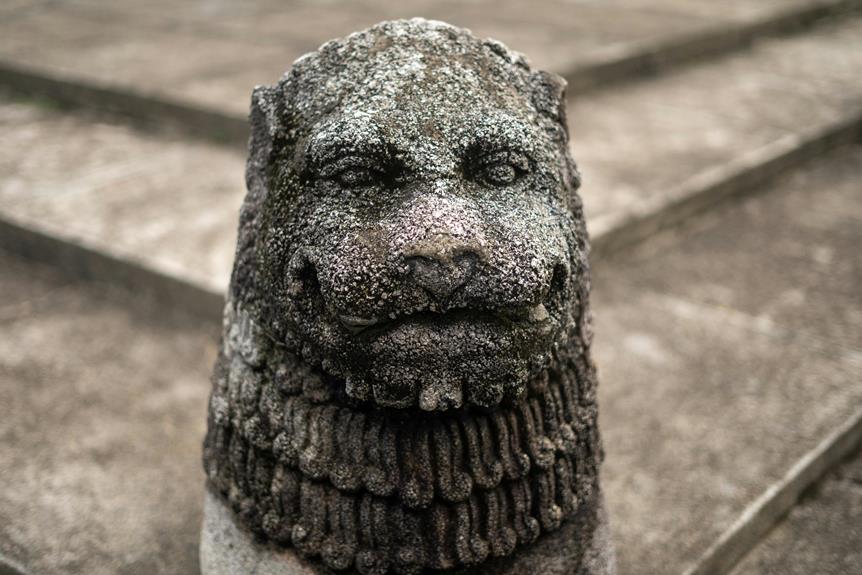Ever gazed upon your once-glorious granite countertops, now dull and lackluster, and thought, 'Ah, the beauty of neglect'?
Comprehend the woes that time bestows upon these majestic stones. But fear not, for within these pages lies the secret to resurrecting their former splendor.
From deciphering the intricacies of granite restoration basics to debating the merits of DIY versus professional services, we assure to unravel the mysteries of this ancient art.
Join us on this journey to rediscover the lost luster of your granite surfaces.
Key Takeaways
Contents [hide]
- 1 Key Takeaways
- 2 Understanding Granite Restoration Basics
- 3 Essential Tools and Materials
- 4 Step-by-Step Cleaning and Polishing Techniques
- 5 Repairing Minor Damages
- 6 DIY Vs. Professional Restoration Services
- 7 Frequently Asked Questions
- 7.1 Can Granite Restoration Be Done on Countertops That Have Been Previously Sealed With a Different Type of Sealant?
- 7.2 How Long Does a Professionally Restored Granite Surface Typically Last Before Needing Maintenance Again?
- 7.3 Are There Any Specific Cleaning Products or Techniques to Avoid When Maintaining Restored Granite Surfaces?
- 7.4 Is It Possible to Restore Granite That Has Been Heavily Scratched or Etched?
- 7.5 Are There Any Special Precautions to Take When Restoring Granite in High-Traffic Areas, Such as Kitchen Countertops or Bathroom Vanities?
- Granite restoration involves specific materials and techniques for regaining shine and removing scratches.
- Essential tools like diamond polishing pads and a variable speed polisher are crucial for effective restoration.
- Cleaning and polishing techniques involve using pH-neutral cleaners, working in sections, and checking for proper polishing.
- Repairing minor damages on granite requires thorough cleaning, assessing scratch depth, and using color-matching fillers for a seamless finish.
Understanding Granite Restoration Basics
When restoring granite surfaces, it's important to understand the fundamental basics of the restoration process. Understanding the characteristics of granite is essential. Granite is a durable and hard stone that can withstand a lot of wear and tear, making it a popular choice for countertops and floors. However, over time, granite surfaces can lose their shine and develop scratches or dull spots. To address these issues, various techniques can be employed in the restoration process. These techniques involve using specific materials and products designed for granite restoration.
One of the key basics of granite restoration is honing. Honing is a technique used to smooth out rough spots and remove minor scratches from the surface of the granite. This process involves using diamond abrasives to gently grind down the surface of the stone, resulting in a smooth and even finish. By understanding these techniques and utilizing the right materials, it's possible to restore granite surfaces to their original beauty.
Essential Tools and Materials
To effectively restore granite surfaces, acquiring the essential tools and materials is important for achieving successful results. When it comes to polishing techniques, one of the key tools you'll need is a high-quality diamond polishing pad. These pads come in varying levels of grit to help you achieve the desired level of shine on your granite. Additionally, having a variable speed polisher is critical for controlling the polishing process and guaranteeing a smooth finish.
For cleaning tools, investing in a pH-neutral stone cleaner is essential to avoid damaging the granite surface. Microfiber cloths are also a must-have for gentle yet effective cleaning. To tackle stubborn stains, a poultice paste made from baking soda and water can work wonders.
Other materials you should have on hand include protective gear such as gloves and goggles to ensure your safety during the restoration process. By having these essential tools and materials ready, you'll be well-equipped to restore your granite surfaces to their former glory.
Step-by-Step Cleaning and Polishing Techniques
Utilizing a high-quality diamond polishing pad is crucial for achieving a smooth and shiny finish when restoring granite surfaces. When it comes to the cleaning process and polishing methods, there are several key steps to follow:
- Cleaning the Surface: Begin by thoroughly cleaning the granite surface with a gentle pH-neutral cleaner to remove any dirt, grime, or residue.
- Preparing the Polishing Pad: Make sure the diamond polishing pad is properly attached to the polisher and adjust the speed settings as recommended by the manufacturer.
- Starting the Polishing Process: Work in small sections, applying light to moderate pressure in a circular motion to buff the surface evenly.
- Monitoring Progress: Periodically check the surface for any areas that may require additional polishing to achieve a uniform finish.
- Finishing Touches: Once the entire surface has been polished, clean off any residue and admire the smooth, glossy result of your hard work.
Repairing Minor Damages
For repairing minor damages on granite surfaces, understanding the extent of the damage is essential before determining the appropriate repair method. When dealing with surface scratches, it's important to first clean the area thoroughly. Next, assess the scratch's depth – for shallow scratches, a simple polishing compound might suffice, while deeper scratches may require professional intervention.
Color matching is another critical aspect of minor damage repair. To ensure a seamless repair, selecting a color-matched epoxy or filler is key. This helps blend the repaired area with the rest of the granite surface, maintaining its aesthetic appeal.
When repairing minor damages on granite, attention to detail is paramount. Properly identifying the type and extent of the damage allows for a targeted and effective repair process. Whether it's addressing surface scratches or ensuring color matching, taking the time to assess and repair minor damages correctly can significantly enhance the overall appearance and longevity of your granite surfaces.
DIY Vs. Professional Restoration Services
When contemplating granite restoration, one must weigh the benefits of tackling the project oneself or enlisting professional services. While DIY projects can be fulfilling, they come with potential pitfalls that may result in costly mistakes when dealing with precious granite. On the other hand, professional restoration services offer a range of benefits that guarantee your granite surfaces are restored to their former glory with precision and expertise.
- DIY Pitfalls:
- Risk of damaging the granite further due to lack of experience.
- Time-consuming process that may not yield desired results.
- Incorrect use of products leading to irreversible harm to the stone.
- Limited access to specialized tools and equipment for thorough restoration.
- Lack of knowledge on the appropriate techniques for different types of granite damage.
- Professional Benefits:
- Expertise in handling various types of granite restoration needs.
- Access to high-quality products and tools for best results.
- Time-efficient process with guaranteed outcomes.
- Professional assessment of the damage to provide suitable restoration solutions.
- Long-term cost-effectiveness by avoiding potential DIY mistakes that may necessitate more extensive repairs.
Frequently Asked Questions
Can Granite Restoration Be Done on Countertops That Have Been Previously Sealed With a Different Type of Sealant?
Yes, granite restoration can be performed on countertops previously sealed with a different sealant. It's essential to make sure sealing compatibility. Surface preparation is important. Various restoration techniques can effectively address this issue, maintaining the granite's quality.
How Long Does a Professionally Restored Granite Surface Typically Last Before Needing Maintenance Again?
Professionally restored granite surfaces typically last several years before needing maintenance. Contrary to common misconceptions, longevity expectations vary based on usage and care. Maintenance frequency should align with cost considerations to preserve the surface.
Are There Any Specific Cleaning Products or Techniques to Avoid When Maintaining Restored Granite Surfaces?
When it comes to maintaining restored granite surfaces, it's essential to avoid harsh chemicals that can damage the stone. Stick to proper maintenance techniques using gentle granite care products and cleaning tips to guarantee longevity and preserve the beauty of your surfaces.
Is It Possible to Restore Granite That Has Been Heavily Scratched or Etched?
Yes, it is possible to restore heavily scratched or etched granite. By utilizing professional polishing techniques, deep scratch removal can be achieved. DIY restoration may help with minor issues, but for significant damage, it's best to seek professional services.
Are There Any Special Precautions to Take When Restoring Granite in High-Traffic Areas, Such as Kitchen Countertops or Bathroom Vanities?
When restoring granite in high-traffic areas like kitchens or bathrooms, sealing precautions are essential. Regular sealing enhances durability, minimizing scratches and etching caused by daily use. This maintenance guarantees longevity, safeguarding the beauty of your granite surfaces.

